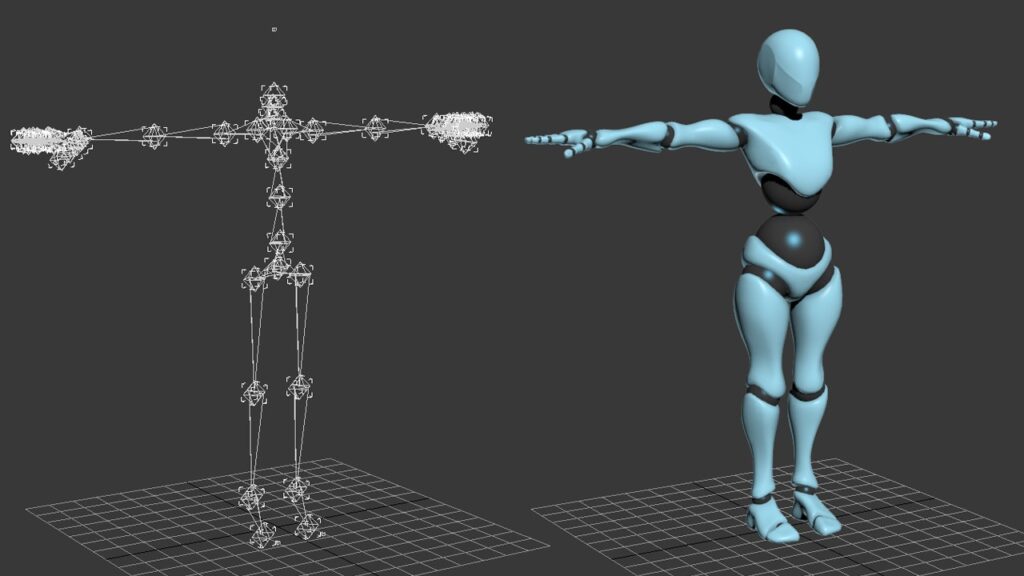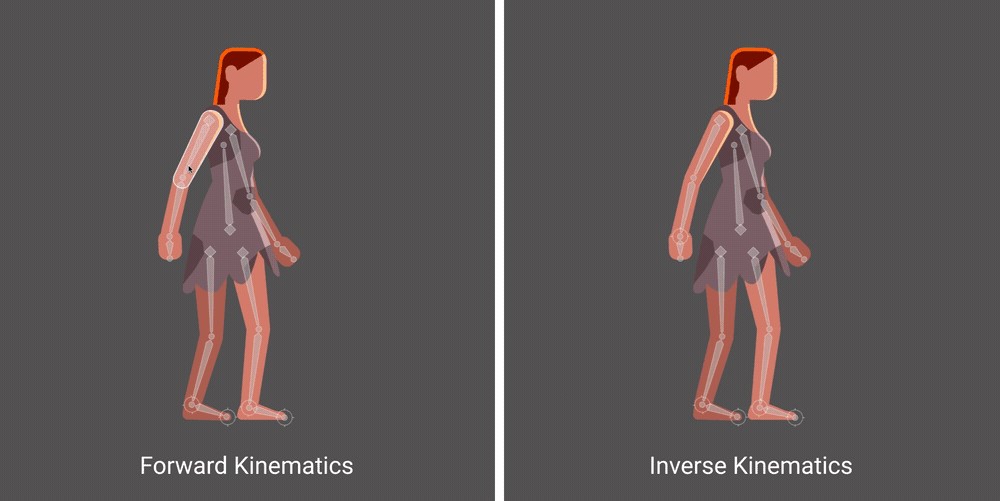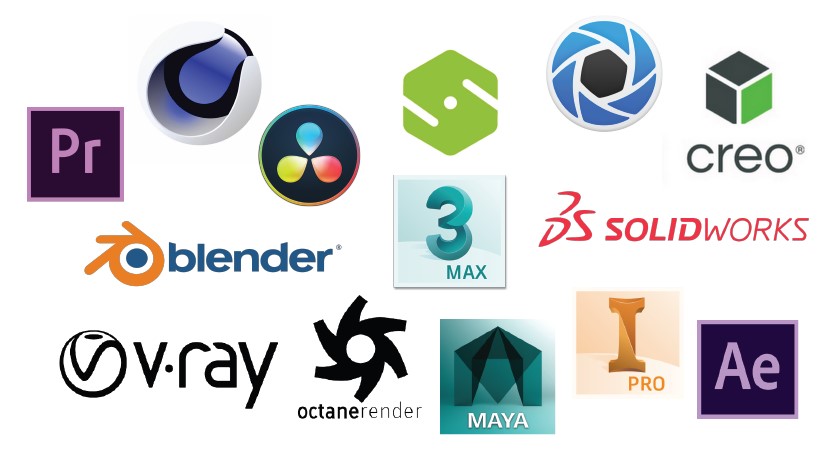Undoubtedly, 3D animation is ruling the entertainment world. With the arrival of Toy Story in 1995, the whole animation industry underwent a revolutionary change.
Nowadays, it seems like every other commercial has some sort of 3D animation component. It attracts our eye with its vibrant forms and colors in advertisements. It transports us to fantastical new worlds in video games while surprising us with yet another cinematic scene that is unachievable in real life.
There are points when we can’t tell if what we’re looking at is a real-life shoot or a meticulously crafted and executed computer simulation because of the video’s remarkable ability to blur those lines.
As a form of narrative and visual entertainment, animation has the potential to educate and entertain audiences of all ages, no matter where they live in the world.
When compared to 2D animation, 3D animation transports the audience into the world of the film in all its height, width, and depth glory. But 3D animation is really simply a catchall term for the vast territory of 3D animation styles.
The best way to learn about them and the situations in which they function is to examine them in a straight classification row.
The Unique Types of 3D Animation Art Styles
It is implied by the phrase “3D animation” that a three-dimensional object will be animated.
The 3D figure rotates 360 degrees correctly, approaches and retreats at the animator’s whim, and eliminates the need for the animator to create many views for the 2D drawing.
Thus, the rigorous compositional concepts of traditional 2D animation are replaced by total viewpoint freedom in 3D.
Initially, this is the most significant contrast between 2D and 3D animation. Let’s dive right into the various 3D animation types
1. Digital 3D
This is the creation of animations and special effects using computer tools such as Maya, Cinema 4D, and SketchUp. It is also known as computer-generated imagery. The versatility of this form of animation is one of its characteristics.
Essentially, this is cinematography: creating visual effects and scenery that cannot be created or obtained through conventional means or substituting stuntmen’s labor with very dangerous stunts.
Additionally, it is utilized to create digital heroes for live-action videos and in-game videos for video games. This style of 3D animation is primarily for visual enjoyment; the viewer does not interact with digital objects.
The essence of animation is to generate a 3D character model, establish specific positions, often known as keyframes, and use a system of splines to calculate the character’s movement within these positions.
Following the software’s interpolation of the necessary frames between the important ones, the animator refines the details.
Consequently, 3D animation is a sophisticated and time-consuming procedure that demands the participation of multiple specialists simultaneously.
- The concept artist visualizes the overall concept and creates detailed sketches of the figure or object, incorporating all potential details.
- The 3D modeler is responsible for creating a 3D model from the concept art.
- The 3D animator constructs a skeleton for the 3D model, rigs it with bones and controls, and programs its movement.
The animator is responsible for an enormous amount of work: unlike the hand-drawn frames of 2D animation, each part of a 3D character or object in 3D animation is always visible and must be worked out regardless of whether it goes into the next frame or not.
The computer handles each frame separately during rendering, which is why the process is so time-consuming. It depends on the duration of the animation and the image quality.
2. Interactive 3D
Using specialized software, interactive 3D animation is created completely in digital format. As the name suggests, this style of animation involves interaction between the viewer and objects in the digital environment.
The user can move in a three-dimensional world using a mouse, keyboard, or joystick; this is a classic choice for producing computer video games.
The sole limitation of implementing this type of animation is the game engine used to construct the game. However, at BuzzFlick, we are able to weave any 3D animation concepts and game engine restrictions into a single organic canvas; this is entirely doable if experience, talent, and creative vision are there.
Due to the possibility of contact, the animation must meet specific requirements. It should be very modifiable, as the player can approach the object from various angles and under various circumstances.
Animators must meticulously determine the dynamics of the 3D animated background and deliver seamless form changes at the appropriate moment. The same applies to character animation: the primary character must strictly adhere to the player’s control requests.
3. Virtual Reality 3D
This kind, which is partially comparable to interactive animation, advances toward total immersion. Special VR devices like Google Glass or Oculus are utilized to explore the three-dimensional world.
For instance, Stress Level Zero’s Boneworks is a virtual reality game that uses the Unity engine and is compatible with all PC-compatible VR headsets.
Creating animations for virtual reality games is a difficult task. Since the player is entirely immersed in them, all environments and elements must be flawlessly crafted and appear authentic. In the gaming industry, augmented reality animation is also a frontrunner. It does not require specialized headsets and is frequently published for Android and iOS. You only need an AR-capable smartphone.

Source: Pokémon Go
A renowned example is Pokémon GO, which introduced millions of gamers to augmented reality games. The combination of appealing to nostalgic feelings and employing current technology, which was previously unfamiliar to a vast majority of people, resulted in numerous Guinness records and astounding earnings.
4. Stop Motion Animation
This is a sort of homage to 2D animation, which is a frame-by-frame technique in which objects are physically changed in small increments between individually photographed pictures to portray independent movement while a series of frames are rapidly played back.
Simply animation is made by photographing objects frame by frame. Here, the creative possibilities are limitless: you can utilize things, toys, products, dolls, and so on. This form of animation is typically employed in commercials, presentations, and music videos.
Depending on the objects utilized, stop-motion animation is subdivided into several subtypes:
- Claymation – objects made of clay or platinum
- Cutout – Characters, objects, and settings are cut from flat materials such as paper, cardboard, or fabric
- Silhouette – Characters, objects, and surroundings are shown as black silhouettes
- Lego/action figures – Lego figurines or action figures
- Puppet – puppets and dolls
- Pixilation – existing environments and real-life people
Regardless of the item used, stop-motion animation involves adhering to a single rule: taking photos from the same straight-on viewpoint. Repairing an erroneously taken image is extremely challenging because it requires recreating the entire composition at a certain moment. Therefore, particular attention and care are required for this form of animation.
5. Cel Shading
Cel-shaded animation, often known as toon shading, is the stylization of 3D to make it appear as hand-drawn flat art. Therefore, if you get the topic of how to make 3D animation appear 2D, feel free to respond that cel shading can be used

Source: Pinterest
The use of specialized rendering settings obtains this effect. Video games (such as Afro Samurai by Bandai Namco or Astral Chain by PlatinumGames), cartoons, and commercials frequently employ cel-shading.
The primary characteristics of this technology are:
- Textures devoid of photorealism and a gentle color palette
- Rigid shadow limits
- Ink outline effect in the finest hand-drawn tradition
The goal is for the volume to appear flat in real-time. Shadows should be homogeneous and seamless. It is more difficult to execute these guidelines in practice than when making realistic objects, and they are typically applicable primarily to stationary or not animated bodies. This is utilized in numerous 2D animated series like The Simpsons and Futurama.
6. Motion Capture
This technology is a must-have for developers of films, AAA titles, and mobile applications because it enables truly realistic character movement and the staging of virtually any scene.
Mocap is mostly used to capture an actor’s movements for character animation. Frequently, horses and dogs are documented.
Occasionally, mocap data serves as a reference for manual character animation. The primary benefit of a mocap system is that the animator instantaneously obtains the exact weight and timing of the character.
Realistic movements are typically not as precise and fluid as those in a cartoon, and animating this energy with hands alone is rather challenging.
Quantic Dream’s Fahrenheit was the first video game totally animated with motion capture technology. It was released in 2005. In tandem with this, a collection of cinematic video games was created, culminating in Death Stranding.

Source: Game Radar
Modern engines such as Unreal Engine 4 make it easier and quicker to create a prototype because they facilitate pre-rendering and allow you to view the entire scene at once.
Today, mocking is significantly simpler than it was ten years ago, as actors can view their 3D avatars and surroundings directly on stage.
With the advancement of technology and graphics in video games and films, the combination of Performance Capture and Motion Capture is employed less frequently.
Thus, the merits of the performers are highlighted, including both those responsible for the movements of the characters and the celebrities who lend their appearances and voices to computer-generated characters.
Collaboration with dozens or even hundreds of actors has always been a vital element of the production process, and for performers like Keanu Reeves and Mads Mikkelsen, participating in the development of a video game is as exciting as filming a blockbuster.
7. Motion Graphics
This vast part includes both 2D and 3D directions and has a wide range of applications, including advertisements, television programs, product and explainer videos, presentations, sporting events, live streaming, and much more.
Characters are typically excluded due to the difficulty of incorporating their movement while creating rapid and high-quality motion graphics.
However, the range of logo animation possibilities, visual effects, and the ability to incorporate 3D animation enables the creation of a vast array of high-quality corporate videos, animated videos for product presentations, creative CVs, and much more.
Utilizing keyframing and tweening to ensure seamless transitions is a component of motion graphics design technique. Modern technology enables the rapid creation of motion graphics, even for internet videos and streaming.
P.S: It’s not difficult to find motion design studios compared to finding a 3D animation studio. We also offer motion graphics services. You can reach out to us as well 😊.
3D Animation Techniques Worthy of Consideration
If we are now so well-versed in the different types of 3D animation, why not add the top three animation techniques employed by animators worldwide to our knowledge base?
1. Skeletal Animation
This approach, also referred to as 3D rigging, involves animating a 3D figure with relatively few controls that approximate the skeleton or structure of a puppet.

Source: REDsdk
Each bone is attached to the one before it, taking anatomical laws into account so that when a single bone moves, all of the vertices attached to it also move.
This substantially simplifies the animator’s job, as they only need to establish the position and rotations of the bones and not all of the model’s existing vertices.
The movements of the vertices are ultimately determined by the movements of the bones. The skeleton is referred to as a rig, whereas the surface representation of the object is known as a mesh or skin.
2. Inverse Kinematics
This animation method’s essence is creating a collection of joint configurations that deliver the smoothest, quickest, and most precise movement to the specified points.
It is most frequently used to determine the movements of a character’s arms and legs and to model all characters and objects built using skeletal animation.

By establishing the position of the last bone in the chain, movement is achieved, and the other bones are automatically positioned in the correct location. For instance, if the fingers’ hold on the object is animated, the wrist will automatically move in the desired direction.
This is how it differs from forwarding kinematics: in order to move the character’s hand to the object and grasp it, one must first give it a general position by moving the shoulder, then set the position for the forearm, and finally turn the hand in the correct direction and ensure the object is grasped with fingers.
3. Fluid Simulation
As its name suggests, this approach is designed to animate fluids such as water, lava, or smoke. As a result of imitating the movement of fluids as accurately. It is possible to generate magnificent images of thunderstorms and storms.
The same method is utilized if it is necessary to depict the behavior of fire or large-scale atmospheric impacts. Therefore, it is popular not only for video games but also for videos and advertisements.
P.S: You must know only video animation companies who offer 3D animation services can create 3D animated videos for you. If you’re planning to outsource your project then pay attention to this factor.
Different Types of 3D Animation Software

Source: Cadilight
Before we go out with a whimper, let’s take a quick pause to have a look at the primary animation tools that enable us to perform nothing short of miracles.
Digital 3D
Autodesk = $205/Month
Interactive 3D
Maya = $1620/1year and $4375/3 years
Virtual Reality 3D
Blender = Free
Cel Shading
Cinema 4D = $94,99/Monthly, $719,88/1 year, and $3495/Perpetual
Stop Motion
Dragonframe = $295 + USB controller and $305 + Bluetooth controller
Stop Motion Studio = $4,99 for iOS/Android, and $9,99 for Mac/Windows
Motion Capture
Autodesk Maya = $205/Monthly, $1620/1 year, and $4375/3 year
Autodesk MotionBuilder = $1855/1 year, and $5010/3 year
Motion Graphics
Adobe After Effects = $31,49/Monthly, and $239,88/1 year
Cinema 4D = $94,99/Monthly, $719,88/1 year, and $3495/Perpetual
To Summarize
You now understand the most popular types of 3D animation and their applications. 3D animation continues to stretch the bounds of reality and permeate the most diverse aspects of our lives.
If you are contemplating choices for generating your animation, you can experiment with the applications we’ve outlined or simply describe your needs in a few lines; we are highly enthusiastic about working with animation and will be pleased to assist you.
3D Animation Styles and Techniques – FAQs
How many different styles of animations are there?
Generally, there are five primary types of animation, such as 2D animation, 3D animation, whiteboard animation, motion graphics, and cel animation.
Is 3D animation more expensive compared to other animation styles?
Yes, when compared to other animation styles, 3D is costlier. A 60 seconds 3D animated video price can range from $10,000 to $20,000.
What are the different styles of 3D animation?
The unique styles of 3D animation are:
- Digital 3D
- Interactive 3D
- Virtual Reality 3D
- Stop Motion
- Cel Shading
- Motion Capture
- Motion Graphics
- Which are the popular 3D animation techniques animators should know about?
Here are some common 3D animation techniques:
- Skeletal Animation
- Inverse Kinematics
- Fluid Simulation




